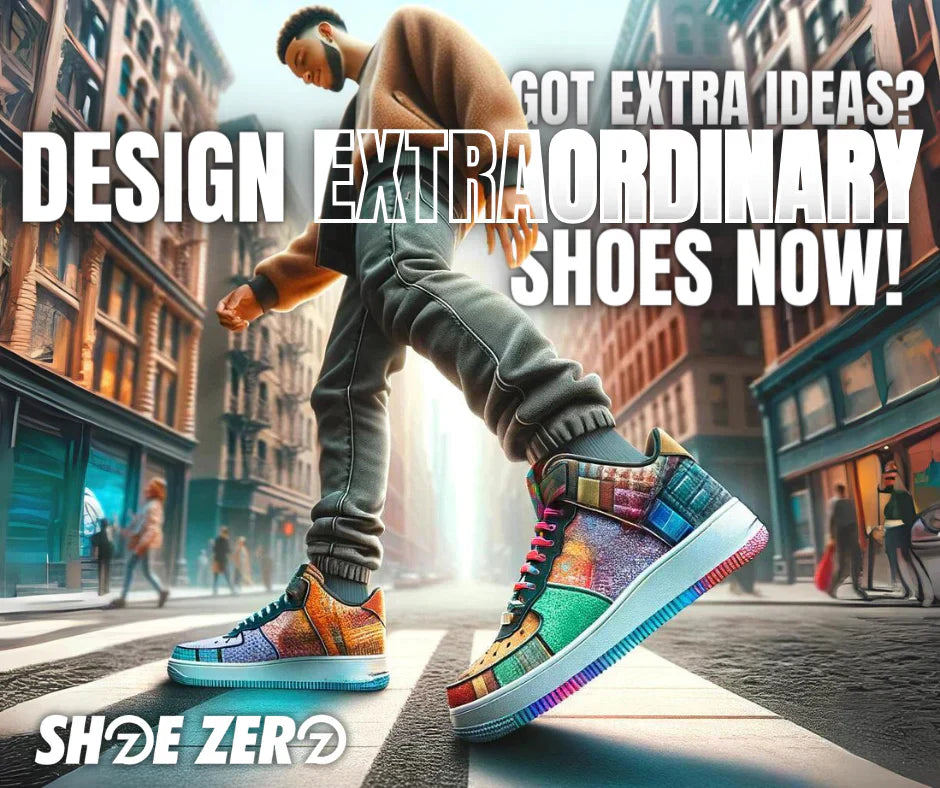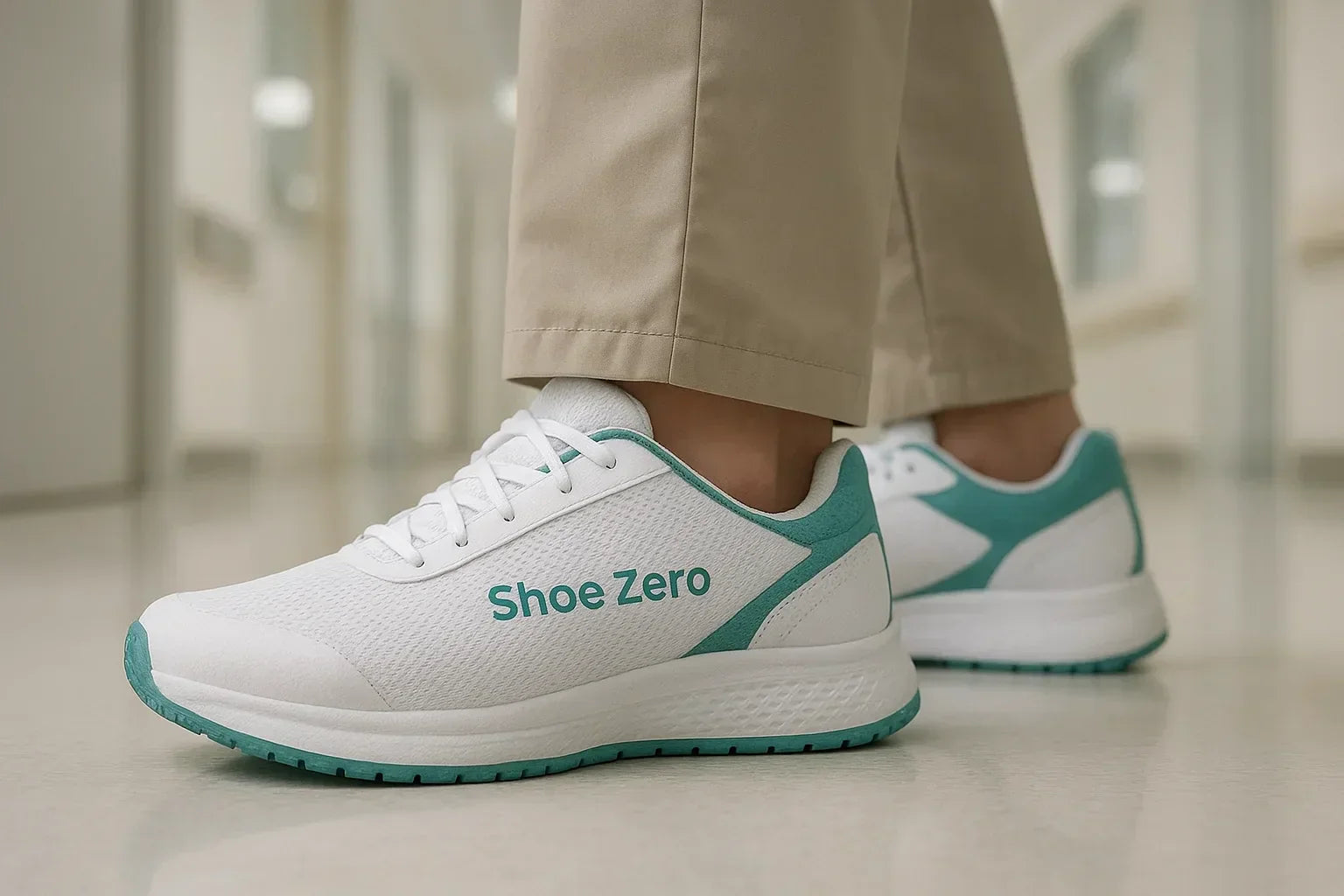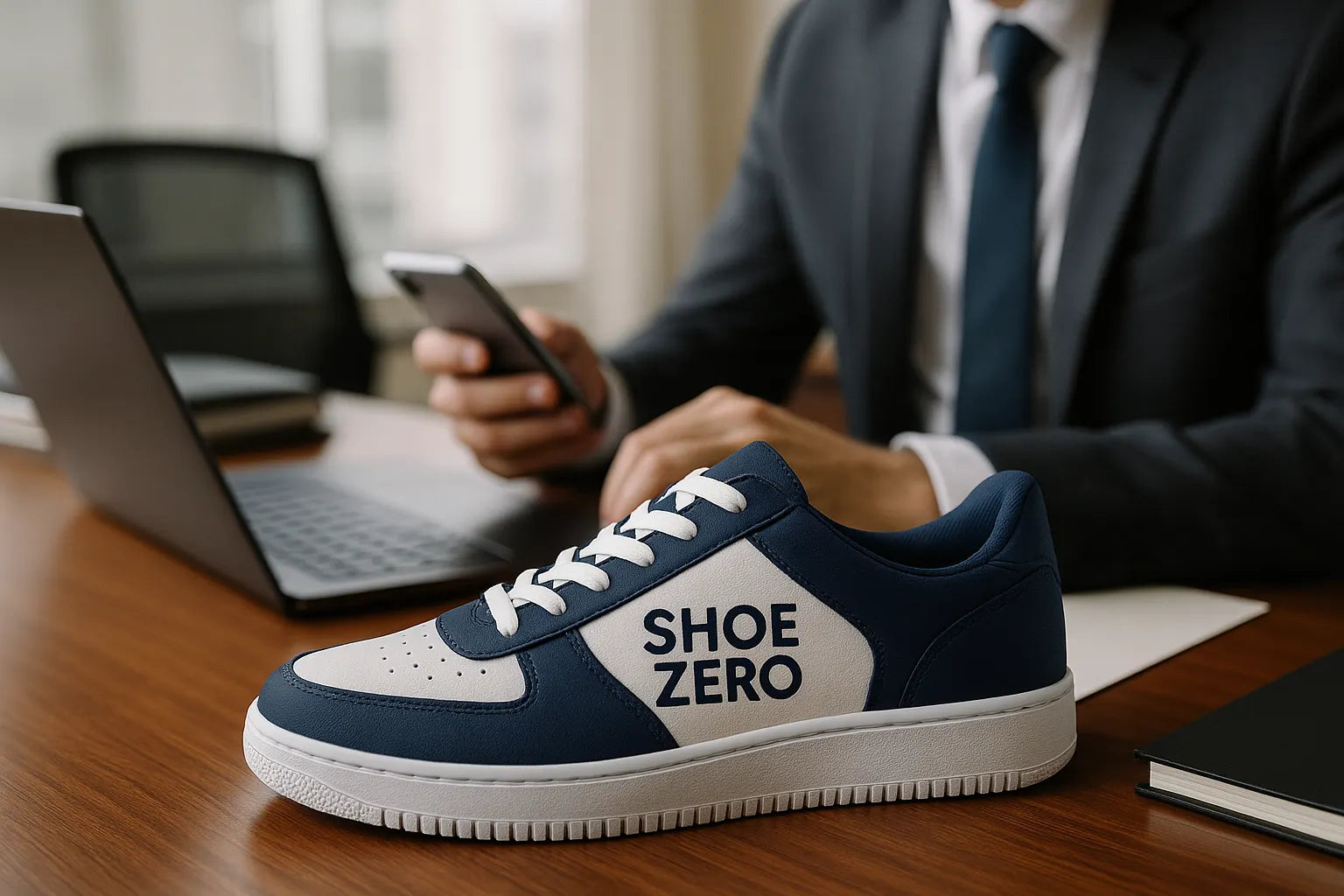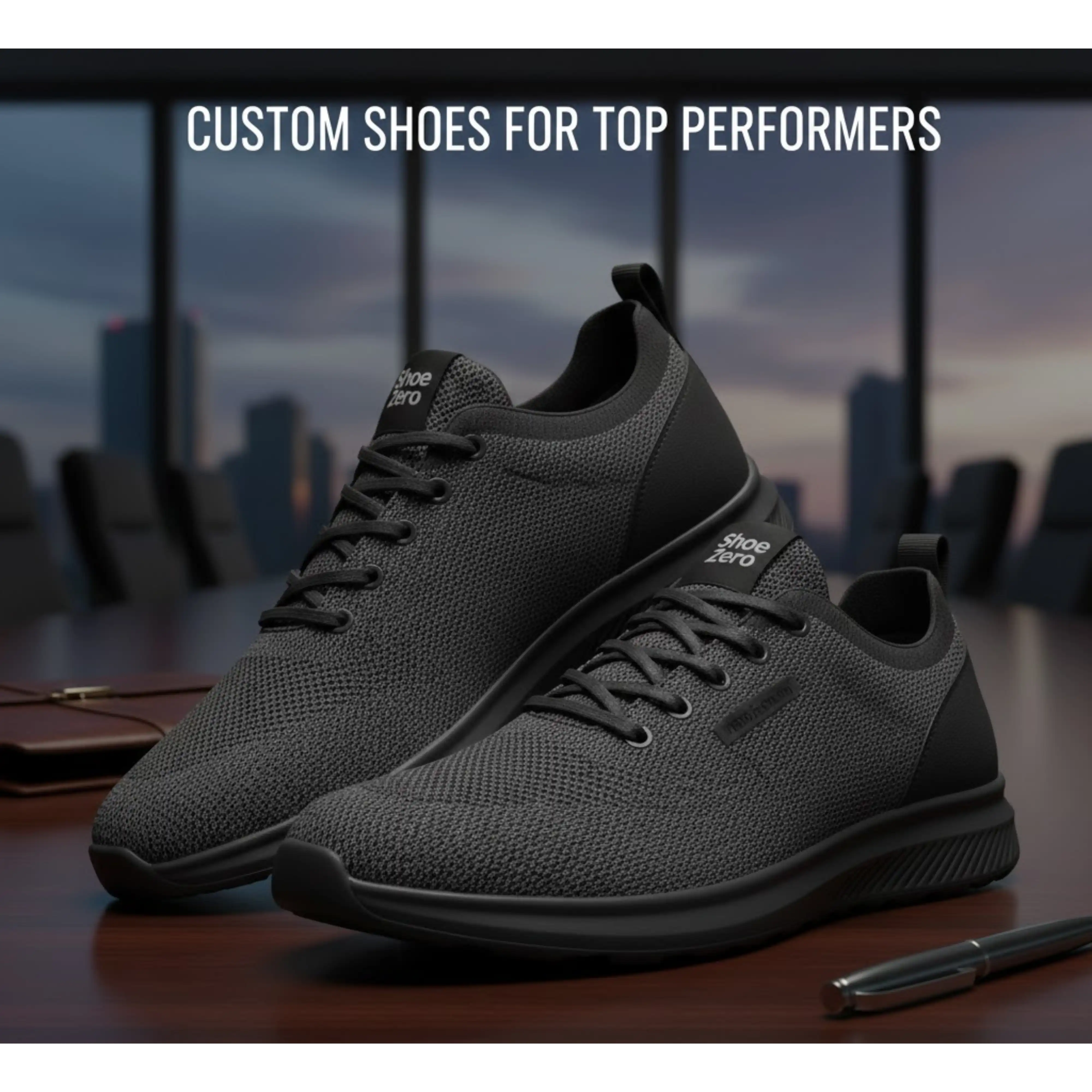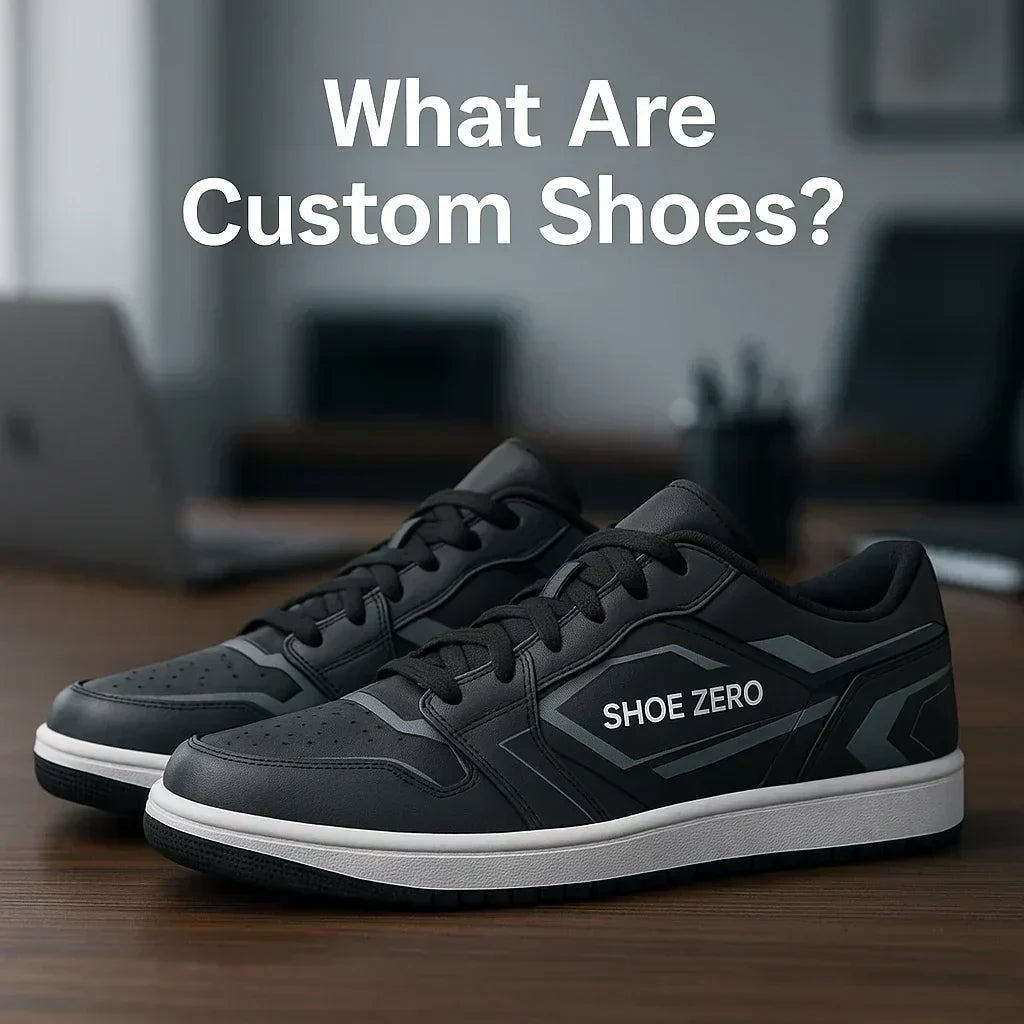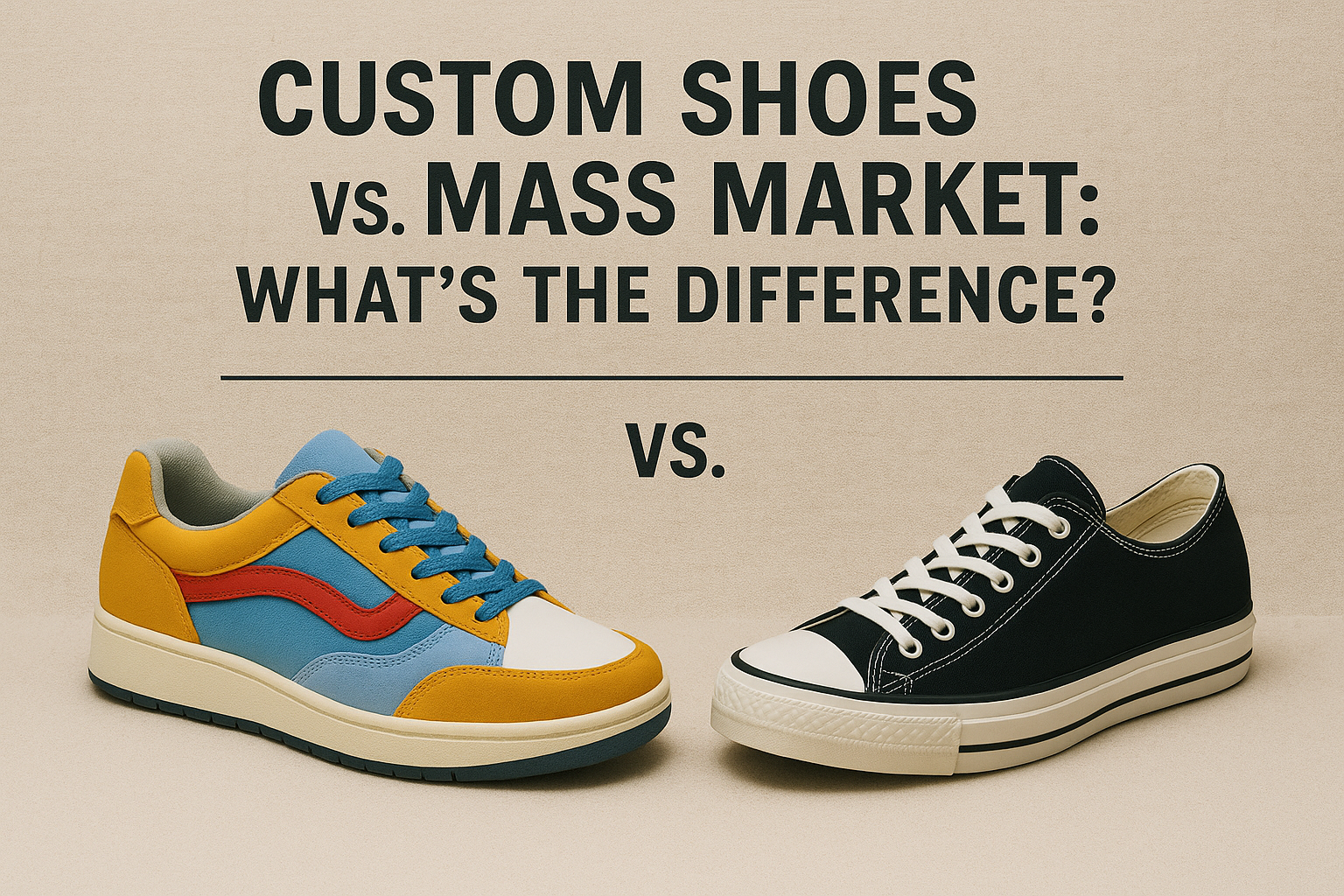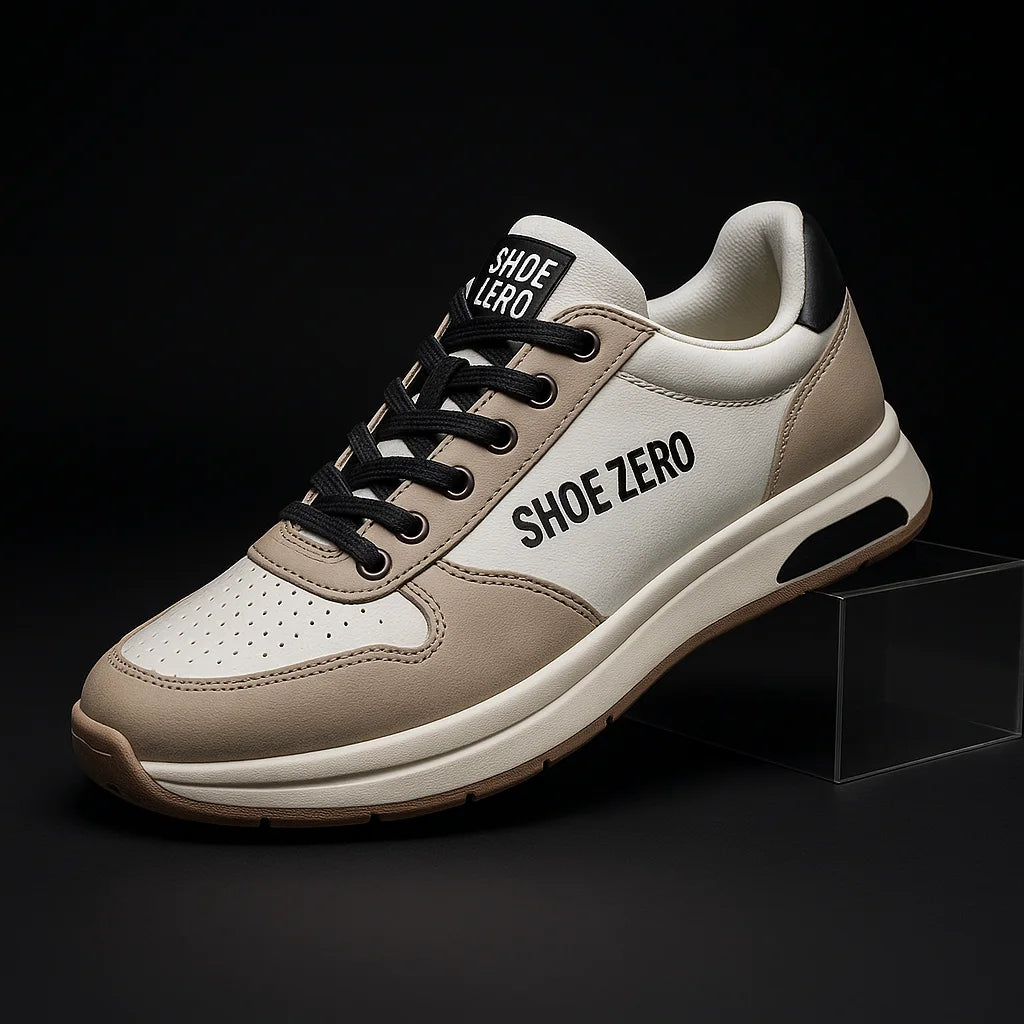In the bustling world of fashion, where every step and style counts, shoe designers stand on the precipice of something extraordinary. It's not just about crafting a pair of shoes; it's about telling a story, your story.
Imagine, if you will, the gentle hum of a busy street, people moving about, each step echoing a unique rhythm. Now, picture your designs being a part of that symphony. The transition from being a shoe designer to selling your own designs is akin to a caterpillar becoming a butterfly.
It's a journey of transformation, filled with challenges, learning, and ultimately, triumph. As we embark on this journey together, think of me as your guide, speaking in tones as comforting and familiar as Morgan Freeman, guiding you through the intricacies of this exciting venture. This guide is designed to illuminate the path from the drawing board to the customer's wardrobe, ensuring that your creations not only see the light of day but also walk the streets of the world.
Key Takeaways
- Know your target audience, the current market trends, and what your competitors are doing.
- Identify what makes your shoe designs unique and leveraging that uniqueness in your product development.
- Build a compelling brand story and utilizing both online and offline marketing strategies effectively.
- Understand the pros and cons of different sales channels, including online and offline options, and finding the right mix.
- Navigate the legal aspects of starting a shoe line and managing finances wisely from the outset.
Understanding the Market
The Significance of Market Research for Shoe Designers
Embarking on the journey of selling your own shoe designs requires a map, and market research is just that. Imagine walking into a vast library, each book filled with knowledge about who wants your shoes, what styles are in demand, and who else is crafting similar wonders. It's about understanding the whispers and shouts of the market, the silent wishes of customers, and the loud declarations of trends.
By identifying your target audience, you're essentially choosing who you want to have a conversation with. Analyzing competitors isn't about mimicking their path but learning from it, finding gaps they've missed, and trails they've left unexplored. It's a dance of numbers, styles, and consumer desires, where your unique designs find their rhythm and audience.
Key Market Segments for Shoe Designers
|
Market Segment |
Description |
|
Athletic |
Focused on sports and active lifestyles. |
|
Luxury |
High-end, exclusive designs. |
|
Casual |
Everyday wear, comfort-focused. |
|
Eco-Friendly |
Sustainable, environmentally conscious designs. |
Top 5 Current Trends in Shoe Design
- Sustainability and eco-friendly materials.
- Retro and vintage revival.
- Athletic and leisure crossover.
- Bold, experimental designs.
- Customization and personalization.
"The best way to predict the future is to invent it." – Alan Kay
Identifying Your Target Audience
Imagine you're at a party, and you need to find someone who loves the same music as you. You wouldn't shout over the noise; instead, you'd look for signs, maybe a t-shirt of your favorite band or someone humming your favorite tune. Identifying your target audience is similar. It's about knowing who would wear your shoes, not just anyone with feet, but those who share your vision and style.
Is it the eco-conscious walker? The luxury aficionado? Or perhaps the casual soul seeking comfort? This step is about tuning your designs to resonate with their desires, creating not just shoes, but experiences that they seek. Once you know your audience, every design you create is like a letter addressed to them, filled with the passion and detail they cherish.
Analyzing Competitors and Market Trends
Now, let's talk about understanding the sea you're about to dive into. The market is like an ocean, vast and filled with other sailors. Analyzing competitors is akin to understanding the routes they navigate, the flags they fly, and the treasures they seek. It's not about steering the same course but finding your own uncharted waters where your designs can truly shine. Market trends, on the other hand, are like the winds that push ships forward. By keeping an eye on these trends, you ensure your designs sail smoothly towards success. It's a delicate balance between being true to your creative vision and adapting to the evolving tastes of your audience. Imagine creating a pair of shoes that speaks both to the timeless and the timely, a pair that fits perfectly into the narrative of now but also carries the echo of your unique voice.
Developing Your Shoe Line
Crafting a Unique Selling Proposition (USP) for Your Designs
Diving into the creation of your shoe line is like setting out to write your magnum opus. Each shoe is a verse, a stanza that contributes to the epic poem of your brand. Your Unique Selling Proposition (USP) is the theme that ties these verses together, the chorus that resonates with your audience. It's what sets your designs apart in a crowded marketplace.
Think of it as your signature, the mark that says, "This is who I am, and this is what I stand for." Whether it's unparalleled comfort, innovative design, or sustainable practices, your USP is the beacon that guides customers to your doorstep. It's about finding that one thing you do best and shouting it from the rooftops, in the most elegant way, of course.
Checklist for Choosing Sustainable Materials
- Biodegradability and recyclability.
- Ethical sourcing and fair trade practices.
- Low environmental impact in production.
- Durability and longevity.
- Transparency in the supply chain.
Comparison of Manufacturing Partners Suitable for Small-Scale Designers
|
Manufacturer |
Specialization |
Minimum Order Quantity |
Sustainability Practices |
|
Maker A |
Athletic |
100 |
High |
|
Maker B |
Luxury |
50 |
Moderate |
|
Maker C |
Casual |
No minimum |
Low |
|
Maker D |
Eco-Friendly |
200 |
Very High |
"The most enduring designs are those that know themselves." – A successful shoe designer
The Importance of Quality and Sustainability in Product Development
In the realm of shoe design, quality and sustainability are not just buzzwords; they are pillars upon which lasting brands are built. Imagine each pair of shoes as a promise to your customer, a vow of durability, comfort, and mindful creation. In today's world, where the echo of environmental consciousness grows louder, integrating sustainability into your product development is not just wise; it's essential.
It speaks of a brand that not only cares for the feet that wear its designs but also for the world those feet walk on. Quality, on the other hand, ensures that your creations stand the test of time, not just in durability but in style. It's about crafting shoes that remain faithful companions on life's journeys, cherished and chosen, time and again.
Selecting the Right Materials and Manufacturing Partners
Imagine standing before a canvas, paints at the ready. The materials you choose, the strokes you employ, define the masterpiece you're about to create. Similarly, in shoe design, the materials you select and the manufacturing partners you ally with are crucial decisions.
These choices are the foundation upon which your designs will come to life. Selecting the right materials isn't just about aesthetics; it's about aligning with your brand's values, be it luxury, sustainability, or innovation. The manufacturing partner, on the other hand, is like a dance partner in a tango of creation.
It's essential to find someone who understands your vision, respects your standards, and is willing to journey with you through the ups and downs of production. Together, the right materials and the right partner ensure that your designs not only see the light of day but do so in a manner that's true to your vision.
Branding and Marketing Strategies
Building a Compelling Brand Story
In the tapestry of the market, your brand story is the thread that weaves through every product, every campaign, and every customer interaction. It's what makes your shoe line not just a collection of items but a narrative that people want to be a part of. A compelling brand story is like a warm, inviting fire on a cold night, drawing people closer. It's about sharing the why behind your creations, the passion that fuels your designs, and the vision that guides your brand.
This narrative doesn't just sell shoes; it sells a belief, a belonging, a lifestyle. Whether your story is one of innovation, tradition, or revolution, it's the authenticity and emotion at its core that will resonate with your audience. In a world where consumers are bombarded with choices, your brand story is your chance to make not just an impression, but a connection.
Social Media Platforms Comparison for Shoe Marketing
|
Platform |
Audience |
Best Use |
Engagement Level |
|
|
Young Adults |
Visual storytelling, Influencer collaborations |
High |
|
|
Broad Range |
Community building, Customer service |
Moderate |
|
|
Primarily Female |
Inspiration boards, Traffic to site |
Low |
|
|
Broad Range |
Real-time engagement, Brand updates |
Moderate |
Top 10 SEO Keywords for Shoe Designers
- Sustainable shoes
- Handcrafted footwear
- Luxury sneakers
- Eco-friendly sandals
- Athletic shoes
- Designer boots
- Custom shoes
- Vegan leather shoes
- Limited edition footwear
- Comfortable walking shoes

"The only way to do great work is to love what you do."
– Steve Jobs
Effective Online and Offline Marketing Strategies for Shoe Designers
As a shoe designer venturing into the realm of sales, your marketing strategy is your map and compass. In the vast landscape of options, both online and offline avenues offer unique opportunities to connect with your audience. Online, the digital world is your playground, with social media, SEO, and e-commerce platforms offering direct channels to your customers.
It's about creating content that engages, inspires, and ultimately, converts viewers into buyers. Offline, don't underestimate the power of traditional methods like pop-up shops, collaborations, and networking events. These face-to-face interactions add a personal touch, a tangible connection to your brand that digital spaces can't replicate. Balancing online and offline strategies allows you to cast a wide net, ensuring that no matter where your audience is, they can find and fall in love with your designs.
Utilizing Social Media to Create Buzz and Engagement
In today's digital age, social media is the town square, a place where conversations happen, trends are set, and brands are built. For shoe designers, platforms like Instagram and Pinterest are not just channels but canvases, spaces to showcase your designs, tell your story, and engage with your audience. It's about creating content that captures the essence of your brand, whether through stunning visuals, behind-the-scenes glimpses, or customer testimonials.
Social media is also a two-way street, offering you the chance to listen to your audience, understand their desires, and respond to their feedback. This engagement is gold, turning followers into fans, and fans into customers. It's not just about posting pictures; it's about starting conversations, joining communities, and building a tribe that believes in what you do.
Customer Testimonial
One customer who gave a feedback and said:
“Pretty impressive service and top notch quality shoes . I’m on the second pair in 6 months and I don’t think that I’ll stop here, the interface is easy and you can create intricate designs fast. I highly recommend this to anyone who’s seeks to be unique this option of creativity is new to me and I’m super pleased that it exists. I pace orders from uk and they deliver fast and safe .10/10 service and on top of all that you can sell what you’ve created on their website!”
-Alex, Ordered custom shoes at Shoe Zero
Sales Channels and Distribution
Overview of Online Versus Offline Sales Channels
In the journey of selling your shoe designs, choosing the right sales channels is like choosing the right paths in a vast forest. Each path, be it online or offline, offers different vistas and challenges. Online channels, with their global reach, allow you to connect with customers across the world from the comfort of your studio.
Websites, e-commerce platforms, and social media storefronts are modern-day marketplaces, bustling with potential buyers. Offline channels, on the other hand, offer a tactile experience, a chance for customers to touch, feel, and fall in love with your designs in person. Brick-and-mortar stores, pop-up events, and trade shows provide invaluable opportunities for personal interaction, feedback, and building customer loyalty. Balancing these channels allows you to maximize your reach, catering to both digital natives and those who prefer the tangible world of shopping.
Pros and Cons of Different Sales Channels for Shoe Designers
|
Sales Channel |
Pros |
Cons |
|
Online Stores |
Wide reach, 24/7 availability |
High competition, Shipping challenges |
|
Physical Retail |
Personal interaction, Immediate sales |
High overhead costs, Limited reach |
|
Pop-up Shops |
Flexibility, Brand experience |
Short-term, Location dependent |
|
E-commerce Platforms |
Easy setup, Built-in audience |
Fees, Less brand control |
- E-commerce Platforms Comparison
|
Platform |
Fees |
Customization |
Audience |
|
Platform A |
Low |
High |
Broad |
|
Platform B |
Moderate |
Moderate |
Niche, High-end |
|
Platform C |
High |
Low |
Mass Market |
The Benefits of E-commerce Platforms for Independent Designers
For independent shoe designers, e-commerce platforms are like launching pads, propelling your creations into the vast expanse of the digital universe. These platforms offer a unique blend of accessibility and opportunity, allowing you to set up shop without the need for physical space. They're not just sales channels; they're showcases for your brand, accessible by anyone, anywhere, at any time.
The benefits are manifold, from lower overhead costs compared to traditional retail to the ability to directly engage with your customers. E-commerce platforms also offer valuable insights into customer behavior, preferences, and trends, allowing you to adapt and tailor your offerings. In essence, they provide a foundation upon which you can build your brand, test your products, and grow your audience, all with the click of a button.
Tips for Successful Retail Partnerships and Pop-Up Events
Venturing into the offline world through retail partnerships and pop-up events is like embarking on a grand expedition. It's about finding allies in the landscape of commerce, those who share your vision and can help amplify your voice. Successful retail partnerships are symbiotic relationships, where both parties benefit from the unique strengths of the other. It's about alignment in brand values, audience, and goals.
Pop-up events, on the other hand, are your moment in the spotlight, a chance to create immersive brand experiences that captivate and engage. These events are not just about selling shoes; they're about telling your story, connecting with your audience on a personal level, and creating memories that linger. Both retail partnerships and pop-up events require careful planning, clear communication, and a dash of creativity, but the rewards – in terms of brand visibility, customer engagement, and sales – can be immense.
"Shoes are the finishing touch on any outfit and it is important to complete a look with the perfect pair!"
-Tracy Reese
Legal and Financial Considerations
Understanding the Legal Aspects of Starting a Shoe Line
Navigating the legal landscape of starting a shoe line can feel like deciphering an ancient map, full of unfamiliar terms and potential pitfalls. Yet, understanding these legal aspects is crucial, akin to knowing the rules of the road before embarking on a journey. It's about protecting your creations, your brand, and ultimately, your business. From trademarking your designs to understanding copyright laws, each step is a safeguard against the uncertainties of the marketplace.
Additionally, navigating contracts with suppliers, manufacturers, and retailers requires a keen eye and a clear understanding of your rights and obligations. This legal groundwork might not be the most glamorous part of launching your shoe line, but it's the foundation upon which sustainable success is built.
Key Legal Considerations Before Launching Your Shoe Line
- Trademarking your brand and designs.
- Understanding copyright and patent laws.
- Contracts with suppliers and manufacturers.
- Online sales regulations and taxes.
- Employment laws if hiring staff.
"Innovation distinguishes between a leader and a follower." – Steve Jobs
Financial Planning and Management Tips for New Designers
Setting sail into the world of shoe design and sales without a financial compass can lead to turbulent waters. Financial planning and management are the rudders that guide your business, ensuring you stay on course through calm and stormy seas alike. It's about budgeting wisely, understanding your costs, and planning for both growth and unforeseen challenges.
This includes everything from initial investments in materials and production to ongoing expenses like marketing, legal fees, and website maintenance. Keeping a close eye on your finances helps you make informed decisions, adapt to changes, and seize opportunities without jeopardizing your business's health. Financial literacy might not be the most exciting aspect of being a shoe designer, but it's undoubtedly one of the most critical.
The Importance of Intellectual Property Rights and How to Protect Your Designs
In the creative odyssey of shoe design, your ideas are your treasure, and protecting them is paramount. Intellectual property rights are the maps that mark where your treasures lie, ensuring others recognize and respect your claims.
Whether it's trademarking your brand name, copyrighting your designs, or securing patents for innovative features, these legal tools are your safeguards in a competitive market. They protect your creations from imitation and misuse, allowing you to build a unique brand identity and secure a niche in the market. Understanding and utilizing intellectual property rights is not just about legal defense; it's about offense, creating a space where your creativity can flourish, protected and recognized.
As we draw the curtains on this guide, remember, the journey from shoe designer to selling your own designs is both challenging and exhilarating. It's a path less traveled, filled with potential for those brave enough to walk it. Your designs are more than just footwear; they're expressions of your creativity, your vision, and your passion.
Armed with the knowledge of the market, the intricacies of product development, branding, marketing, sales channels, and the legal and financial scaffolds that support your venture, you're not just prepared; you're empowered. So, take that step, confident in the belief that your creations have the power to leave footprints, not just on the streets, but in the hearts of those who wear them. The world is waiting for your designs to walk it.
Summary
- Gain deep insight into the market, including customer preferences and industry trends.
- Establish a clear and compelling unique selling proposition for your shoe designs.
- Develop an engaging brand story and executing strategic marketing plans, both digitally and physically.
- Select appropriate sales channels and understanding distribution logistics.
- Ensure legal protection for your designs and brand, coupled with robust financial planning.
Ready to step into the world of shoe branding and leave your mark on the industry? If you’ve been searching for the best way to create your own shoe brand, look no further. Our step-by-step guide walks you through everything you need to know, from finding your niche to launching your first collection. With Shoe Zero, you can bring your vision to life using our easy-to-use platform to design custom shoes that reflect your unique brand identity. Whether you want to launch custom basketball shoes, stylish custom low tops, bold custom high tops, durable custom boots, comfy custom sandals, playful custom kids shoes, or branded custom merch, Shoe Zero makes it simple. Start your journey today and turn your footwear dreams into reality. Don’t wait—your brand awaits!
FAQ (Frequently Asked Questions)
1.How do I identify a target market for my shoe designs?
Identifying your target market for shoe designs starts with understanding who your designs appeal to based on style, function, and affordability. Conduct market research to identify demographic characteristics such as age, gender, lifestyle, and fashion preferences. Engaging with your audience through social media and utilizing feedback from initial product launches can also provide valuable insights into your target market's needs and preferences.
2.What components are crucial for a successful shoe brand?
Crucial components for a successful shoe brand include a distinctive brand identity, exceptional product quality, strategic marketing, effective customer engagement, and continuous innovation. A strong brand identity helps distinguish your products in the market, while high-quality materials and craftsmanship ensure customer satisfaction. Robust marketing strategies and customer engagement tactics are essential for building a loyal customer base, and innovation keeps your brand relevant and competitive.
3.Which materials should I choose for my shoe designs?
When choosing materials for your shoe designs, consider the brand's values, the shoe's intended use, and your target market's preferences. Sustainable materials like organic cotton or recycled plastics appeal to environmentally conscious consumers, while luxury brands may prefer high-quality leather or exotic materials. Durability, comfort, and aesthetic appeal should also guide your material selection to ensure your products meet customer expectations.
4.What are effective strategies for marketing my shoe brand online?
Effective strategies for marketing your shoe brand online include leveraging social media platforms to showcase your designs and engage with your audience, using search engine optimization (SEO) to improve your website's visibility, and employing email marketing to keep your brand top-of-mind with customers. Additionally, influencer partnerships can extend your reach, while targeted ads can attract potential customers to your online store.
5.How can I scale my shoe design business?
Scaling your shoe design business involves expanding your product line, exploring new markets, optimizing production and supply chain efficiencies, and enhancing your marketing efforts. Consider diversifying your offerings to cater to a wider audience, entering international markets, and investing in digital marketing to increase brand awareness. Strengthening relationships with manufacturers and suppliers can also improve production capabilities and support business growth.


